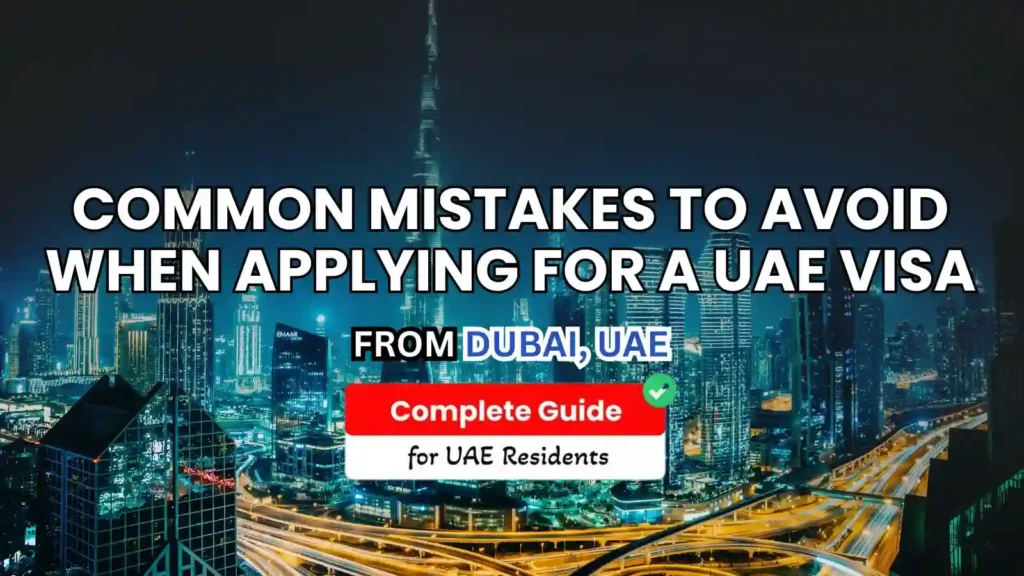
Applying for a UAE visa isn’t hard, but it does demand neat paperwork and calm timing. I like to treat it like packing a carry-on: everything has its place, nothing extra, nothing missing. A little care up front saves you from frantic follow-ups and “why is my file on hold?” moments later. Here’s a friendly walkthrough of the most common slip-ups—and how to dodge them with confidence.
1) Incomplete applications
This is the classic stumble. One missing page, one unchecked box, and your file pauses. I print the checklist, lay the documents out on a table, and tick line by line. If something’s pending—like a fresh photo or a salary letter—I write a sticky note with the date I’ll get it. Sounds basic, but it stops the “I’ll add it later” trap that always becomes “oops, I forgot.”
2) Mismatched details
Tiny errors trigger big delays. A middle name left off one form. A swapped day and month. An old address still sitting in your profile. I do a slow read with a finger on the page, matching passport, application, and sponsor details. If you’ve ever had a bag lost because of a missing tag, you know the feeling. Consistency is your tag.
3) Applying too late
Processing is usually quick—until it isn’t. Holidays happen. Systems get busy. Appointment slots vanish just when you need one. I now set a personal rule: apply two to three weeks before travel, more in peak seasons. Early beats perfect. You can adjust plans; you can’t hack the queue.
4) Photo problems
The UAE is particular about photos: background, size, lighting, the whole package. I learned the hard way that a slightly off background equals a bounced file. Get a professional photo that matches the specs, save a digital copy with your name, and you’re done. One ten-minute errand, days saved.
5) Wrong visa type
Tourist, business, transit, long-term—each path asks for different proof. Applying for the wrong one is like showing up at the gym in flip-flops: you won’t get far. Read the specific requirements for your category. If you need an invitation letter for business, don’t assume a hotel booking will do. The right box opens the right door.
6) Overstay history not cleared
If you’ve ever overstayed, even by accident, clean it up before you apply again. Pay fines, keep proof, and be ready to show you’ve resolved it. I treat this like settling a bill before checking out; you want a clear record behind you and a smooth path ahead.
7) Weak financial proof
Some visas want evidence you can fund your stay. The goal isn’t to judge your wealth—it’s to confirm you won’t get stuck. Recent bank statements, steady salary credits, and, where relevant, a sponsor letter tell a simple story: you’re prepared. Avoid sudden unexplained deposits. If something unusual appears, add a one-line note so it doesn’t look mysterious.
8) Sponsor details not verified
When a company, hotel, or family member sponsors you, their paperwork has to be just as tidy as yours. Confirm their license, ID copies, and contact details match exactly. I’ve seen applications wobble over a misspelled company name or an outdated letterhead. Five minutes of verifying saves five days of waiting.
9) Using unreliable agents
A “great deal” that promises instant approval should set off alarms. Work with authorized providers or official portals. If you do use an agent, ask for a clear checklist, receipts, and status updates in writing. I keep every email and receipt in one folder on my phone. When someone asks for a document, I can pull it up while standing in line for coffee.
10) Ignoring follow-ups
Submitting isn’t the finish line. Sometimes immigration or a service center asks for an extra page or a clearer scan. I check email and spam daily after submission. A quick reply within 24 hours often keeps your file moving. When you’re responsive, your application feels alive, not abandoned.
How I keep everything tidy (and sane)
I keep a “visa pack” ready at all times: passport scan, Emirates ID, recent photo, bank statements, salary letter, and a simple travel plan. Each file is named clearly—“Passport_YourName.pdf”—so I’m not hunting through random downloads. Before I hit submit, I read my application once out loud. If I trip over a date or a detail, I fix it. Out loud reading catches what silent skimming misses.
Writing a simple cover note
Even when it’s not required, I like a short paragraph that says who I am, why I’m traveling, where I’ll stay, and when I’ll return to work. It turns a stack of documents into a clean story. Keep it friendly and factual. You’re making the officer’s job easier, and that goodwill shows.
Timing your bookings
Book cancellable hotels and hold flights that allow changes. Your application wants confirmations; your wallet wants flexibility. After approval, firm things up. I also add the key dates to my calendar—submission day, expected processing window, and travel day—so I’m not guessing when to check status.
Document translations and scans
If anything needs translating, get a certified translation and keep it paired with the original. Scan everything in good quality—no tilted pages or shadows. A crisp file looks like a crisp applicant. It’s a small signal that you’ll be a smooth traveler too.
Final thoughts
A successful UAE visa application comes down to three habits: start early, aim for clean consistency, and answer quickly when asked. The rest is simple blocking and tackling—right photos, right category, right sponsor, clear finances, and a watchful eye on follow-ups.
